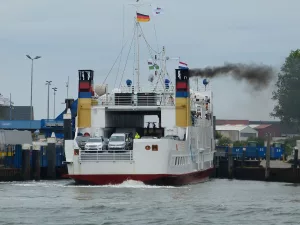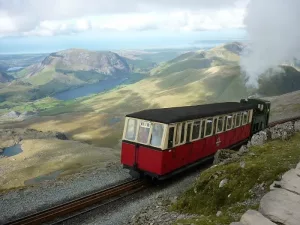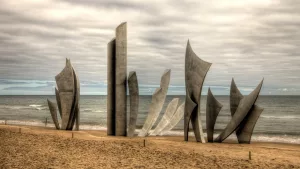Travelling to Italy - Travel Hub
Travelling to Italy is way up there as far as bucket list countries are concerned. Whether you want to go for an Italian city break, an Italian road trip or two, or ‘to do Italy’, it is a country that is just packed with beauty – be it the stunning dolomite mountains, the historical cities, the glorious architecture or the delicious food – Italy really does have it all!
Whether you are exploring Italy in your motorhome, in a car, on a bike or even taking city breaks, This handy Italian Travel Hub will give you all the practical and essential information that you need to know before you go!
Italy Travel Hub - Jump To
Key Fast Facts for Travelling to Italy
Language
Italian is spoken all over Italy and many speak a small amount of English.
Currency
In Italy they use the single European currency of Euro and Cents.
Schengen
Italy is part of the Schengen region, (it counts as part of your 90 days free visa travel)
Time Zone
Italy is in the Central European Timezone, which is GMT +1
ATM & Credit Cards
Italian ATMs are plentiful. Credit Cards are widely accepted. Carry cash for coffee or snacks!
Plugs and Voltage
C, L and F plug types (all round pins - either 2 or 3). 230 standard voltage and 50 Hz.
Sim Cards
Vodafone and Windtre has the best Italian mobile phone coverage. Airalo for eSim.
Visa
UK travellers need a passport and from 2024 need a ETIAS (electronic visa). Schengen countries travel visa free.
Female Travel
Safe for female travellers, including night time. Take usual evening precautions.
Health
GHIC card will give you emergency cover or state healthcare. Advise Travel Insurance Policy too.
Motorhome Parking
Good range of Sostas (Aires) and campsites. Wild camping possible - especially south.
Italian Roads
Main roads are as expected, but some of the village roads and mountain turns can be challenging
Best Travel Months
Shoulder seasons, April - June, September and October
LPG Available
Never self-serve. Due to different tax rates applied it is not always allowed. Better success at remote stations.
Airports
Multiple airports in Italy - Milan, Rome, Venice, Florence. This one you need to Google!
Motorhome / Car Insurance
Likely to be covered as it is an EU and Schengen country - check with your insurance first!
Tipping
Not standard although shows appreciation. Service charge may be added, check your bill first.
Emergency Numbers
Emergency - 112
Police - 113
Fire - 115
Health - 118
Coast Guard 1530
Pets
Must be microchipped. Must have Rabies injection. Animal Health Certificate (for each trip!)
Traditional Foods
Pizza
Pasta
Fiorentina Steak
Tiramisù
Arancini
Why Visit Italy?
Heading out on a motorhome trip through Italy is like opening a book full of exciting stories and beautiful pictures. You get to drive through different parts of the country, from tall mountains in the north to sunny beaches in the south, all at your own pace. Imagine waking up to a view of vineyards in Tuscany right outside your window, or parking near a small village where you can walk around and taste local food. Trust me – its great. The food is just amazing – and the wine too!
Being in the motorhome also makes it easy to see places off the beaten path, like quiet countryside roads or hidden beaches that you wouldn’t find on a regular trip. Often you can’t get a train to some of the beautiful hilltop places like San Gimignano. It’s also fun to cook meals with fresh ingredients from local markets, enjoying your home cooked food that you have been able to rustle up from the purchases made that day! We love cooking, so doing this is our idea of heaven – as many of our pictures show.
This trip is more than just visiting famous cities; it’s about making your own adventures. Whether it’s finding a perfect spot by a lake or exploring ancient ruins without the crowds, travelling in a motorhome lets you see Italy in a special way, making your journey as unique as the destinations you discover.
Download our Handy Road Trip Planner
Use our handy ready made PDF planner to help you plan your trip. We created a 9 day planner to use to plan a 1 week trip. Simply print out more copies for each week of your travels. Capture everything you need from your start and end points to where you will stay. There is space to write all the things you want to see and more. Plenty of room for jotting down notes as you plan too.
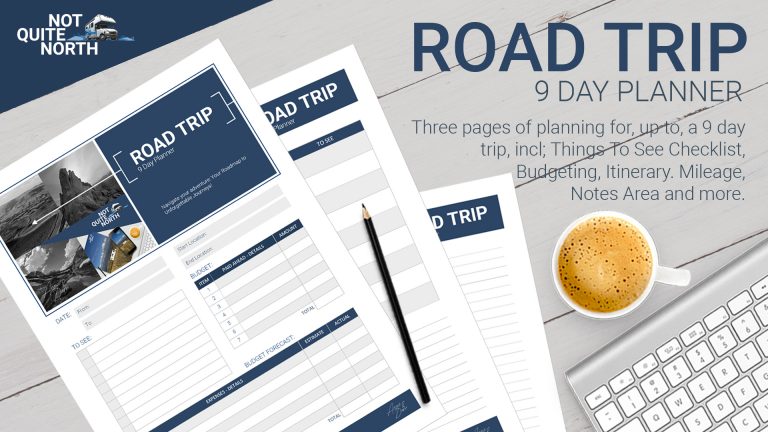
*Road Trip Planner
*By downloading our planner, you give us permission to send you our newsletter. We send this approx every 6 – 8 weeks.
When to Visit for your holiday in Italy
Travelling in Italy is an ever-changing tapestry that shifts beautifully with the seasons, each offering distinct experiences for those on an Italy road trip or motorhoming adventure. The Italian weather is generally cold in the winter and hot in the summer. In August, the Italians empty out and the tourists flock in! As with anywhere else, this is subject to climate change and the unusual weather patterns that are happening globally. In May 2023 – the weather was the wettest they had had for 100 years, with floods in several areas causing loss of life.
Italy in the Spring
Spring (March to May) is a breath of fresh air, with nature awakening and landscapes blooming into vibrant colours. This season is ideal for exploring the lush countryside of Tuscany and Umbria, where wildflowers and olive groves paint the rolling hills. Cities like Rome and Florence are comfortably warm, allowing for leisurely exploration of historical sites and outdoor cafes without the summer’s intense heat or crowds. Spring also marks the beginning of festival season, offering a glimpse into Italy’s rich cultural traditions.
Italy in the Summer
Summer (June to August) beckons with its sun-soaked days and lively atmosphere. Coastal regions like the Amalfi Coast, Sicily, and Sardinia become prime destinations for their exquisite beaches and crystal-clear waters, perfect for a refreshing dip after a day’s drive. While the cities might be hot, they are alive with festivals, open-air concerts, and nightlife. Summer is the high season for travel, so expect more company on your journey, but also more activities and events to immerse yourself in the Italian summer vibe.
Italy in the Autumn
Autumn (September to November) offers a cooler, more comfortable climate, making it an excellent time for food and wine lovers to explore. Regions like Piedmont, known for its truffles and wine, and Tuscany, with its olive harvests, invite travellers to taste the bounty of the season. The countryside is a palette of warm colours, offering stunning views against the backdrop of historic towns. Autumn is also a time for many cultural events and food festivals. This can give you a deeper understanding of Italy’s culinary heritage and a lot of fun trying new flavours.
Italy in the Winter
Winter (December to February) transforms Italy into a wonderland of festive lights and cosy atmospheres, especially in the cities, which host charming Christmas markets and New Year celebrations. The Dolomites and the Alps become hotspots for skiing and winter sports, offering world-class facilities against breath-taking mountainous landscapes. Winter in Italy is a time for cultural exploration in museums, galleries, and theatres. Here you can escape the chill and enjoy Italy’s artistic treasures.
Each season paints Italy in a different light, from the vibrant life of spring and summer to the gastronomic pleasures of autumn and the serene beauty of winter. Whether you’re navigating the country in a motorhome or cruising its highways, Italy’s seasonal diversity promises a rich and varied adventure.
Italy Itineraries and Information
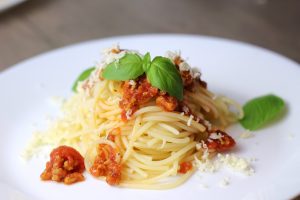
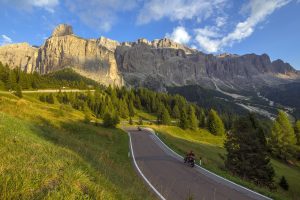
All the essential rules of the road that you need to know about driving in Italy; Including the speed limits in a motorhome, the mandatory items to carry in the van, winter driving and drink driving rules and regulations.
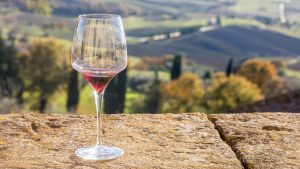
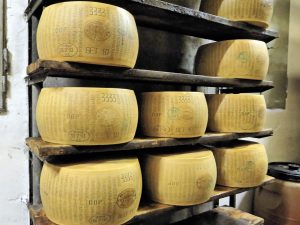
Parma, Italy, is a gem! You’ll fall in love with its world-famous cheese and prosciutto. Stroll through charming streets, visit historic sites, and indulge in amazing Italian flavours. Bellissimo!
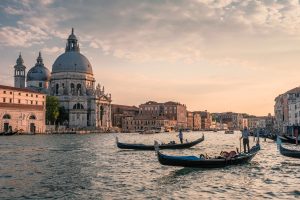

Venice, Italy, is a dreamy destination for a weekend stopover or getaway. Imagine gliding on boats through winding canals, exploring historic buildings, enjoying delicious food, and making unforgettable memories.
Italy since Brexit - What's Changed?
Since Brexit, a number of things have changed with regards to travelling to Italy. The legal requirements for entry are obviously the biggest one. Italy is part of the Schengen Region. This is not the same as the EU or Europe. These are common mistakes people make.
The Schengen and 90/180 Rule
Being part of the Schengen means that UK citizens with British passports can only be in the Schengen region for 90 days out of 180 days. It can be difficult to keep track of – but thankfully there are many apps that can help you with that. It is more complicated than it first sounds – and the penalty for this is can be a ban – a pretty significant event, considering there are 27 member countries of the Schengen. Check out our article for ‘The Schengen Shuffle’ to find out how to manage the impact of this for fulltime travellers. Try and keep a few days in your back pocket just in case something goes wrong.
The EITA Visa for UK Citizens
As of 2024, an online registration system has been introduced for entering into the EU. This stands for the European Travel and Authorisation System. It is linked to a traveller’s passport. It is valid for up to three years or until the passport expires, whichever comes first. If you get a new passport, you need to get a new ETIAS travel authorisation.
With a valid ETIAS travel authorisation, you can enter the territory of these European countries as often as you want for short-term stays – normally for up to 90 days in any 180-day period. However, it does not guarantee entry. When you arrive, a border guard will ask to see your passport and other documents and verify that you meet the entry conditions.
A GHIC Health Card
You will need to apply for a GHIC health insurance card to cover you for basic hospital cover either free or low cost. As always, the strong recommendation is that you have additional insurance policies to cover you. Even as a digital nomad in fulltime travel, we have health insurance to cover us. It is expensive, but it is also invaluable if you need it, as medical care is expensive where ever you go.
Pet Passports Update
The pet passports have changed. Instead of a pet passport, you will need to apply for an Animal Health Certificate (AHC) which confirms that your pet is microchipped and has an up-to-date rabies vaccination. You need to get a new certificate each time you travel within 10 days of your travel date. This will be valid for 4 months.
Traditional Foods In Italy
Italy’s culinary landscape is as diverse and rich as its cultural heritage, with each region having its own specialties. As a couple of foodie motorhomers, a foodie road trip was a must. We created an Italian Foodie Road Trip Itinerary to read, but here are some of the specialities that you can expect to enjoy in the wonderfully diverse Italy:
Truffles: Particularly the white truffles from Alba in Piedmont and black truffles found in Umbria. If you take a trip to Alba, you can buy everything ‘truffle’ from the markets and shops. Truffle honey goes particularly well with Parmesan. It’s such a great combination that I hadn’t had before. Truffle hunting season is December.
Parmigiano Reggiano: Often referred to as “Parmesan,” this hard, granular cheese comes from the Emilia-Romagna region. Aged for 12-36 months, it’s used in a wide variety of dishes, grated over pasta, incorporated into sauces, or eaten on its own. Its great to visit the cheese factories to see exactly how it is made.
Parma Ham (Prosciutto di Parma): A dry-cured ham that is thinly sliced and served uncooked; it’s celebrated for its delicate, sweet flavor. It comes from the Parma region and is often paired with melon or figs.
Balsamic Vinegar of Modena (Aceto Balsamico di Modena): A rich, concentrated vinegar, aged for several years, known for its complex sweetness and acidity. It’s used in dressings, drizzled over vegetables, meats, and even desserts.
Olive Oil: Italy is one of the world’s leading producers of olive oil, particularly extra virgin olive oil. Regions like Tuscany, Puglia, and Liguria are famous for their high-quality oils, which are staples in Italian cooking.
Sicilian Wines: Italy’s wine tradition is vast, with regions like Tuscany (Chianti, Brunello di Montalcino) and Piedmont (Barolo, Barbaresco) being world-renowned. Sicily also contributes with notable wines like Nero d’Avola and Marsala. In the Piedmont region do lots of wine festivals which are great fun!
Pasta: Beyond the well-known spaghetti and penne, Italy offers a vast array of pasta types and shapes, each paired with specific sauces and ingredients according to regional traditions. In fact there is over 350 different varieties, so you are sure to find one with your name on it!
Pizza: Originating from Naples, pizza is perhaps Italy’s most famous culinary export. A true Napoli pizza is actually a DOP product – the cheese used on a Napoli pizza MUST be certified Mozzarella di Bufala Campana and the tomatoes must be either be San Marzano or Pomodorino Del Piennolo del Vesuvio
Gelato: Italian gelato, thought to have originated in the 16th Century, is known for its dense texture and rich flavouring, made with natural ingredients and less air than other forms of ice cream, offering a wide range of traditional and innovative flavours. People call it Italian Ice Cream, but it is different to ice cream as it is
Coffee – of course this is not really a food – but Italians are very precious over their coffees. There are rules you know! Rules for coffee drinking. Never have a milky coffee after 11am. Of any style. If you would like an espresso, simply ask for ‘Un Caffe’. You will get an espresso. DO NOT ASK FOR EXPRESSO! If you want to really do things properly, you should drink it standing and shot it! Regularly!
These specialties are integral to Italy’s culinary identity, reflecting the country’s regional diversity and the deep connection between Italian culture and its food. Each visit to Italy offers an opportunity to explore this rich culinary landscape, discovering the flavours and traditions that make Italian cuisine beloved around the world.
Essential Phrases for your Italian Road Trip:
It’s always useful to have a handful of core phrases to get by, for when you visit restaurants or when shopping. It brings a little job to everyone when people make a little effort to try and speak in the host nations language.
So for Italy, these are the phrases that are useful to know:
- Hello – Ciao
- Goodbye – Ciao (yes, the same as hello, when said casually)
- The bill please – Il conto, per favore
- Have a good day – Buona giornata
- Have a good evening – Buona serata.
- Can I park my motorhome here please? – Posso parcheggiare il mio camper qui, per favore?
We hope you enjoyed this article and found it useful. If you found it useful, please do share with others using the share buttons below. If you think we have missed something – please do let us know. We read all our emails!


